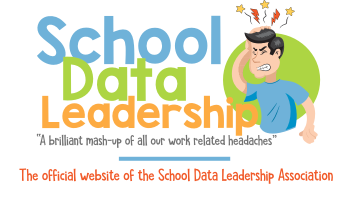Learning and Employment Records (LERs) are digital records that capture and communicate individuals' educational and work achievements. They provide a comprehensive and verifiable record of a person’s skills, competencies, and qualifications across various learning and employment contexts. Here are some key aspects of LERs:
Purpose and Goals
- Holistic View: LERs offer a holistic view of an individual’s learning and employment history, including formal education, certifications, job experiences, and skills acquired through various means.
- Portability: These records are designed to be portable, allowing individuals to easily share their verified achievements with employers, educational institutions, and other stakeholders.
- Verification: LERs use secure, digital verification methods to ensure the authenticity of the records, reducing fraud and enhancing trust.
Components
- Educational Achievements: Information about degrees, diplomas, certificates, and courses completed.
- Work Experiences: Details of job roles, responsibilities, projects, and accomplishments.
- Skills and Competencies: Specific skills and competencies acquired through education and work experiences.
- Certifications and Licenses: Professional certifications and licenses that are relevant to the individual’s career.
- Microcredentials and Badges: Smaller, modular recognitions of skills and knowledge, such as digital badges.
Technology and Standards
- Blockchain Technology: Many LER systems use blockchain technology to ensure the security and immutability of the records.
- Interoperability Standards: LERs often adhere to interoperability standards, such as the Credential Transparency Description Language (CTDL) and Open Badges, to ensure they can be easily shared and understood across different platforms and systems.
- Digital Identity Verification: Methods like digital signatures and identity verification services ensure that the records are tied to the correct individual.
Benefits
- For Individuals: LERs empower individuals to showcase their full range of skills and experiences, potentially improving their employment prospects and career advancement opportunities.
- For Employers: Employers can more easily verify candidates’ qualifications and skills, improving the hiring process and reducing the risk of credential fraud.
- For Educational Institutions: These records help institutions track alumni outcomes and demonstrate the value of their educational programs.
- For Workforce Development: LERs support workforce development initiatives by providing detailed insights into the skills and qualifications of the labor force.
Use Cases
- Job Applications: Individuals can share their LERs with potential employers to provide a comprehensive view of their qualifications.
- Career Transitions: LERs facilitate smoother transitions between careers by clearly documenting transferable skills and experiences.
- Lifelong Learning: They support lifelong learning by allowing individuals to continuously update and share their learning achievements and career progress.
Challenges
- Data Privacy: Ensuring the privacy and security of individuals’ data is a major concern.
- Standardization: Achieving widespread adoption of common standards and frameworks is essential for interoperability.
- Awareness and Adoption: Increasing awareness and encouraging adoption among individuals, employers, and educational institutions is critical for the success of LERs.
In summary, Learning and Employment Records (LERs) represent a significant advancement in how individuals' educational and professional achievements are documented and shared, offering benefits to all stakeholders involved in the education and employment ecosystems.
Learning and Employment Records (LERs) are digital records designed to capture, verify, and share an individual's learning and employment history. These records are interoperable, secure, and can be shared across various platforms to support skills-based hiring and lifelong learning. The key components of LERs include:
- Educational Achievements: Records of formal education, certifications, and degrees.
- Work Experiences: Detailed accounts of job roles, projects, and accomplishments.
- Skills and Competencies: Specific skills acquired through education and work.
- Microcredentials and Badges: Smaller recognitions of skills and achievements, such as digital badges.
Standards and Implementation
LERs adhere to several standards to ensure they are portable, verifiable, and interoperable. Notable standards and frameworks include:
- W3C Verifiable Credentials (VC): A standard for digital credentials that ensures they are secure and tamper-proof.
- IEEE Learning Technology Standards Committee (LTSC): Provides recommended practices for LER ecosystems, ensuring technical interoperability and standardization.
- Credential Transparency Description Language (CTDL): Facilitated by Credential Engine, CTDL is used to describe and catalog credentials in a consistent manner, enhancing their visibility and usability across platforms.
Benefits of LERs
- For Individuals: LERs enable individuals to present a comprehensive view of their skills and achievements, improving job prospects and career mobility.
- For Employers: They provide a reliable way to verify candidates’ skills and qualifications, supporting skills-based hiring practices.
- For Educational Institutions: Institutions can track alumni outcomes and demonstrate the effectiveness of their programs.
Challenges
- Data Privacy: Ensuring the privacy and security of individuals' data.
- Standardization: Achieving widespread adoption of common standards for interoperability.
- Awareness and Adoption: Encouraging adoption among individuals, employers, and educational institutions.
Resources and Further Information
For more detailed information on the standards and implementation of LERs, you can refer to resources provided by Credential Engine and the Learn & Work Ecosystem Library. These platforms offer comprehensive guides and toolkits to help stakeholders adopt and implement LERs effectively.
Sources:
